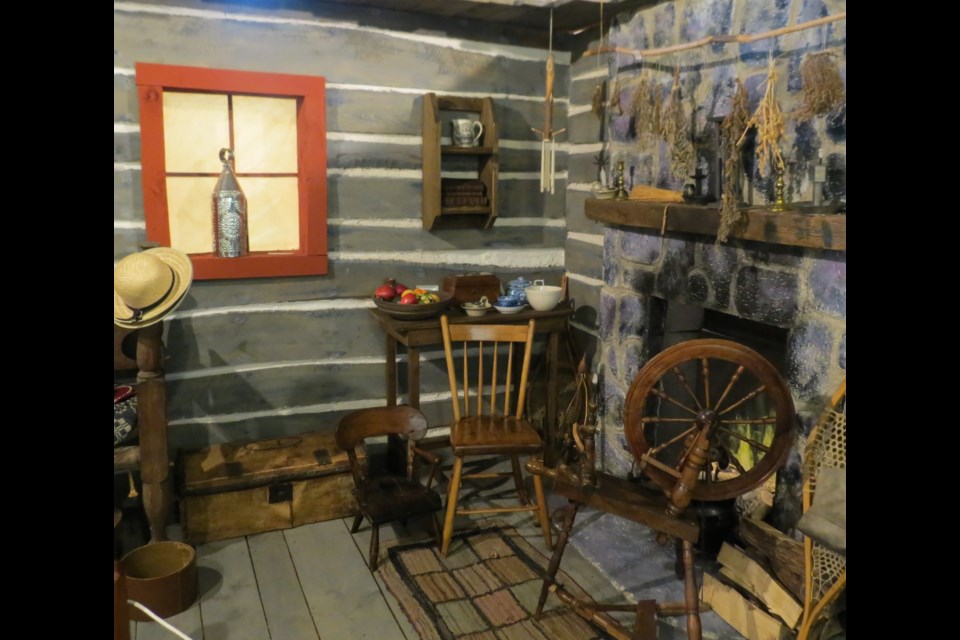There’s an unfortunate misconception that museums are stale and dusty, like a moldering tome taken from a dusty shelf.
In my experience of visiting the many great community museums across Ontario, this is rarely the case—and it’s certainly not applicable to Newmarket’s Elman W. Campbell Museum.
This fine collection expertly balances historical preservation with immersive experience, transporting visitors back in time to explore Newmarket’s surprisingly rich and varied history.
The Elman W. Campbell Museum can trace its roots back to 1974 when the Newmarket Historical Committee was formed in the basement of the Newmarket Public Library with a mandate to collect and preserve Newmarket’s 200-year history.
Two decades later, in 1996, the Elman W. Campbell Museum—named in honour of the first chairman of the Newmarket Museum Board—opened in its current home, the old North York Registry Office at 134 Main St. S., a building that’s a historic artifact in its own right.
The North York Registry Office was built in 1884 as repository for land title records and registers of births, deaths and marriages in the area north of Toronto in the former County of York (now York Region). It was designed by architect John T. Stokes, who served as an engineer for the County of York and later went on to design a number of prominent buildings throughout Newmarket and Toronto.
The building served in this role until 1980, when the records were moved to a new courthouse/registry office complex. It remains the only 19th century Land Registry Office in York Region and is an architecturally significant structure, as reflective of Newmarket’s history as the hundreds of artifacts on display within.
Newmarket’s Elman W. Campbell Museum captures the diverse history of the community, from its roots as a Quaker Settlement in the early 1800s, through its period as a thriving market and industrial community in the mid-19th century, and on to present day as a modern, cosmopolitan city.
Within are hundreds of diverse artifacts, each with a story to tell.
There’s a lock from a mysterious early 19th century jail that exists only in oral history; an 1880s lantern from the original Congregational Church, one of the first ‘electrified’ buildings in town, which burned to the ground in 1896—ironically, the result of faulty wiring.
There’s a book from the Mechanic’s Institute, the forerunner of the modern-day public library system; and a somewhat perplexing town seal, which unlike the current town seal with its ‘nine bees in a hive of activity’ inexplicably only depicts five bees hovering around the hive.
The exhibit halls are engaging and immersive.
Examples include a circa-1850s living room reflecting the life and times of William Roe, fur trader, merchant, and Newmarket founding father, while a recreated 1930s office not only opens a window into white collar working conditions of a century ago but also honours one of the community’s leading businesses, Office Specialty Co.
Then there is a kitchen that showcases everyday life in the early 20th century, a nostalgic and almost idyllic vignette that looks to be right out of a black-and-white episode of Our Gang (if you’re old enough to remember the Rascals you might just recognize some of the appliances on display.)
My favourite recreated scene is that of a pioneer log cabin, with a spinning wheel alongside a hearth—it’s easy to imagine an early 1800s woman, already bone tired from a busy day of labours, sitting by the fire as she spun wool that will make garments to keep her loved ones warm on cold days ahead. It’s an evocative scene.
Indeed, the entirety of the Elman W. Campbell Museum is evocative, paying homage to 200 years of individuals who helped shape this modern city. Take your time and explore the Newmarket you never knew existed.



